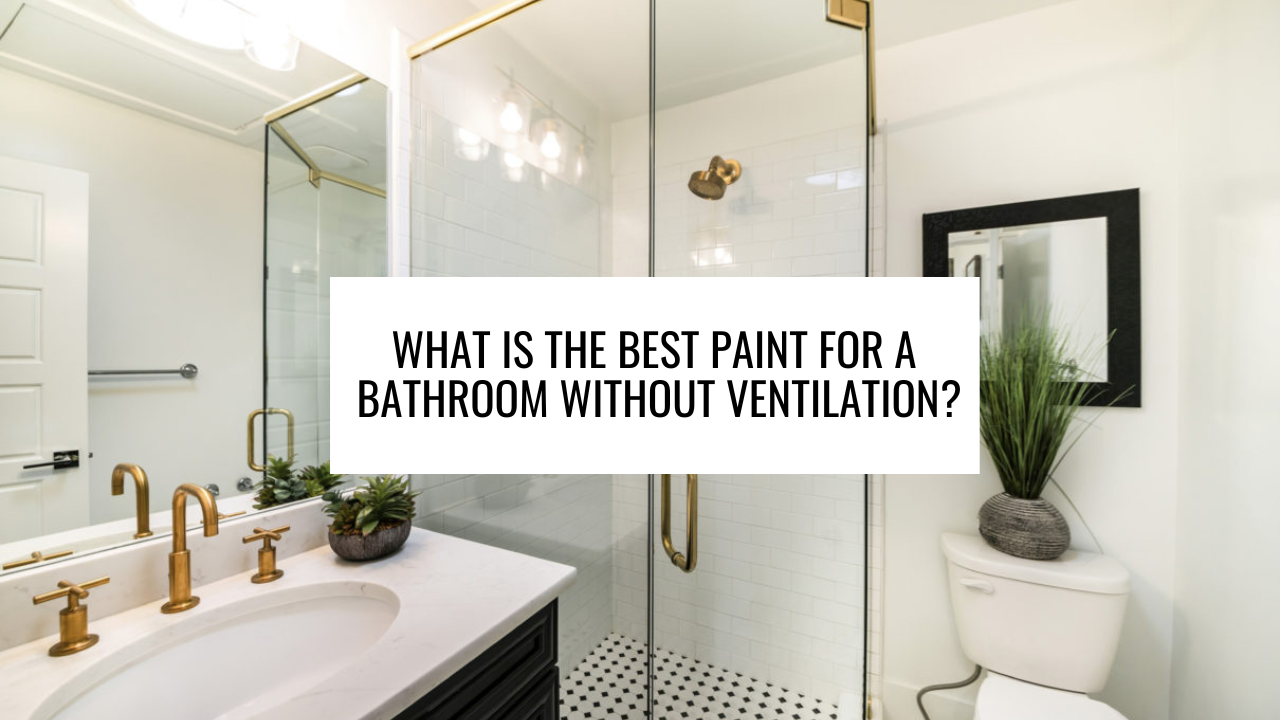When it comes to bathroom renovations, we often focus on fixtures, tiles, and lighting, but one crucial aspect that’s often overlooked is the choice of paint. Bathrooms, especially those without proper ventilation, present a unique challenge due to the high levels of moisture and humidity. Selecting the right paint for such a space is essential to ensure longevity, mold resistance, and a beautiful finish. In this blog post, we’ll explore the best paint options for bathrooms lacking adequate ventilation.
Understanding the Challenge
Before delving into the best paint options, it’s important to understand why bathrooms without ventilation pose a specific challenge. Bathrooms are hotspots for moisture, which can lead to mold and mildew growth if not properly managed. Ventilation systems help to mitigate this issue by expelling damp air, but not all bathrooms are equipped with them. In such cases, it’s crucial to choose a paint that can withstand the constant exposure to humidity.
Water-Resistant Paints
One of the top choices for bathrooms without ventilation is water-resistant paint. These paints are specifically designed to repel moisture and are available in various finishes, including satin and semi-gloss. They create a protective barrier on the walls, preventing water from seeping in and causing damage.
Mildew-Resistant Paints
Mildew-resistant paints go a step further in protecting your bathroom walls. They contain antimicrobial agents that inhibit the growth of mold and mildew. These paints are an excellent choice for bathrooms prone to high humidity levels. Look for products labeled as “mildew-resistant” or “mold-resistant” to ensure the best results.
Semi-Gloss and Satin Finishes
The finish of your paint plays a significant role in how well it stands up to moisture. Semi-gloss and satin finishes are ideal for bathrooms because they are more water-resistant and easier to clean than flat or matte paints. These finishes also reflect light, which can help make a small, windowless bathroom feel brighter and more inviting.
Oil-Based vs. Latex-Based Paints
Another consideration when choosing bathroom paint is whether to opt for oil-based or latex-based paint. Oil-based paints tend to be more durable and water-resistant, making them a good choice for bathrooms without ventilation. However, they also have a stronger odor and can take longer to dry. Latex-based paints are easier to work with, dry faster, and have a lower odor, but they may not be as water-resistant as their oil-based counterparts. When in doubt, consult with a professional painter for guidance.
Preparation and Priming
Regardless of the type of paint you choose, proper preparation is key. Make sure to clean the walls thoroughly, removing any existing mold or mildew, and repair any cracks or holes. Applying a high-quality primer before painting can also improve the paint’s adhesion and durability.
Conclusion: What is the Best Paint for a Bathroom Without Ventilation?
Choosing the best paint for a bathroom without ventilation is crucial to maintaining the appearance and integrity of your bathroom walls. Water-resistant and mildew-resistant paints, especially in semi-gloss or satin finishes, are excellent options for such spaces. Additionally, consider the pros and cons of oil-based and latex-based paints based on your specific needs and preferences. With the right paint and proper preparation, you can enjoy a beautiful and moisture-resistant bathroom for years to come. For more help, ask professional painters such as Sarson Painting.


